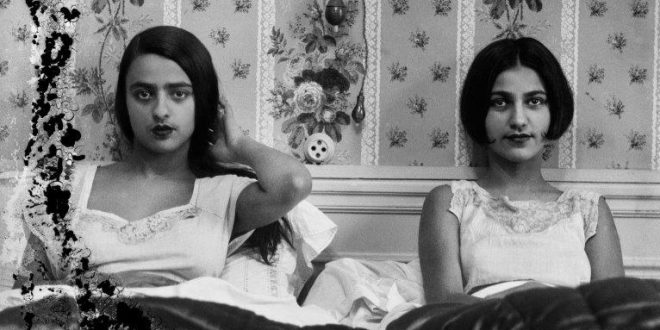A performative photography exhibition of Indian artists is on display at the Vancouver Art Gallery
When we think of Indian art, images of ancient sculptures and paintings start enriching our mind immediately. But the Vancouver Art Gallery is giving all the art lovers an opportunity to explore a different aspect of Indian art. Moving Still: Performative Photography in India — a major exhibition of works by thirteen artists based in India is on display from April 19 to September 2, 2019. It showcases more than one hundred works, dating from the 1800s to the present. “Moving Still shifts the focus from India’s preeminent and historical traditions of sculpture and painting, to its rich and diverse history of photography,” says Kathleen S. Bartels, Director of the Vancouver Art Gallery. “While this exhibition examines contemporary practices, it tells a fascinating narrative of the artistic impact and influences across three generations of artists who turn the camera onto themselves in ground-breaking ways.”
Desi Today got an opportunity to know more about this unique exhibition from Diana Freundl, Associate Curator, Asian Art at the Vancouver Art Gallery.
 What brings Moving Still exhibition to Vancouver? How did Do you land on the idea?
What brings Moving Still exhibition to Vancouver? How did Do you land on the idea?
In 2016 I was the recipient of a curatorial residency in New Delhi. I had been there several times in the past but on this particular trip I spent just over three weeks focused on studio visits with contemporary artists whose focus was on lens-based work. From there I became interested in performativity in image making. I discussed the project with independent curator and founder of Critical Collective Gayatri Sinha and asked her to co-curate. Gayatri introduced the historical beginnings of performative photography.
Please tell us something about the participating artists and their work?
Moving Still is a group exhibition that both traces the trajectory of performative photography in India from historical archives to contemporary art, as well as exploring how identity is embodied or performed through culture, community, gender and storytelling. This is represented in the exhibition through the artwork of 13 lens-based artists. The artists represent multi-generational. There is work from the 1850s and turn of the 20th century to the present. And we have also selected to look at moving images with the inclusion of a few video artists.
The exhibition looks at the early beginnings of photography in India with works from Ram Singh II, the Maharaja of Jaipur, known as the country’s first “Photographer Prince.” Singh would take pictures of those within his inner circle, providing an insight into life within the royal court during the late 1850s to the late 1870s. By the 1890s owning a camera became increasingly common among the leisured classes. One such amateur of the time included Umrao Singh Sher-Gil who, like Ram Singh II, is considered to be a pioneer of photography in India. Through his self-portraits, Sher-Gil projected an image of himself absorbed in reading, writing, yoga or spiritual solitude, which for many historians constitutes the beginnings of a modern self-fashioning in the country.
Vivan Sundaram, the grandson of Umaro Singh Sher-Gill, reconfigures his grandfather’s photographs into digital photomontages to recast the family into fictional roles creating an alternative family history and narrative. Pushpamala N., one of the leading figures in conceptual photography, video and performance, began using photography in the mid-1990s. Pushpamala N. creates fantastical scenes using herself as the subject to perform various roles, such as Sunhere Sapne(1998), in which she stages herself as a stereotypical middleclass housewife and her alter ego fantasy, a wealthy, well-styled socialite, presenting an ironic look at the family post-independence in India. Others who seek to subvert the dominant cultural and intellectual discourse in their work include Sunil Gupta who explores the politics and experience of gay life, often in terms of his own identity as an HIV-positive man and the differencing social and personal implications he encounters living between Canada, England and India. Gupta like others use photo-narratives to blur fact, fiction and mythology to confront societal norms around sex and gender.
This exhibition examines themes of gender, religion and sexual identity using photography, an important medium in India since the mid-nineteenth century. Could you please elaborate on it?
For many years scholarship on Indian modern art focused on sculpture and painting, however increasing number of researchers and critics are uncovering the practice of photography and its importance during nineteenth-century India through to the present. From the late 1850s onward amateur and experienced photographers in the cities of Mumbai (formerly known as Bombay), Kolkata (formerly known as Calcutta) and Chennai (formerly known as Madras) organized lectures, exhibitions and the publication of journals. The availability of equipment including cameras appeared in wealthy homes in Calcutta a year after their invention in France, all of which helped to foster an active culture of experimentation and exchange that continues today.
Moving Still recognizes the beginnings of photography as an artistic medium in India, but focuses on the lens-based practices of contemporary artists. These are artists rooted in the diversity of cultures and multiplicity of India and at the same time, are engaged in a global dialogue. The use of photography distinguishes their work and practice from performance, which is often staged in front of an audience and archived in photographic images. While some artists produce a material tableau where the fictional reality is staged solely for the camera, for others the lens of the viewer is central to the composition of their photo-performance.
What does an onlooker take from this exhibition?
There is so much you can take from this exhibition. Visually and technically the work is very diverse so depending on if a visitor has a particular interest in historical work, contemporary and moving image.
Also in keeping with our commitment to ground the international in the local present artwork from Asia but importantly art of the Asian diasporic communities in Vancouver we engaged community partners Indian Summer Festival co-founder and artistic director Sirish Rao and local artist, Sandeep Johal to develop an interpretative space within the exhibition. Located in the rotunda the space offers a variety of tools (publications, documentaries, public programs) and visual art for considering the themes of identity, gender, migration and community, communicated through visual, audio and reading materials provide broader context.
Photography is completely revolutionized with the onset of technology and smartphones, how do you think Moving Still holds relevance?
Most of our daily experiences and memories are unavoidably mediated through and facilitated by a personal relationship to photography. While we need to be aware of how easy it is to stage one’s self-identity through image making, this exhibition also looks at the experience of photographic self-encounter as an opportunity for transformative self-performance and identity creation. Furthermore, presented here in larger context of this exhibition in a very public setting at the Vancouver Art Gallery, many of the works here represent a reclamation of the image in the service of diversity,rather than as a tool of conformity, as found in its older visual and western artistic traditions.
 Desi Today Magazine
Desi Today Magazine




